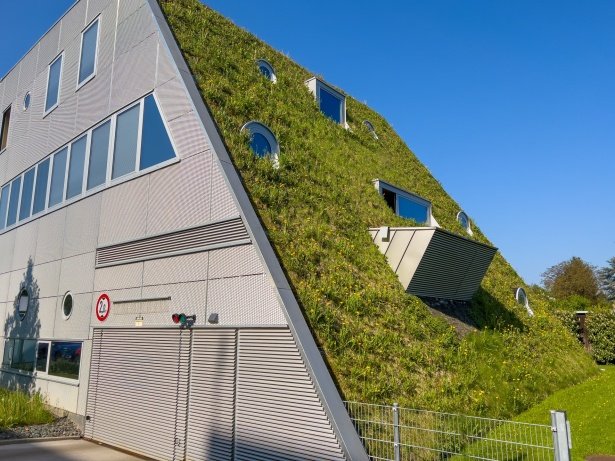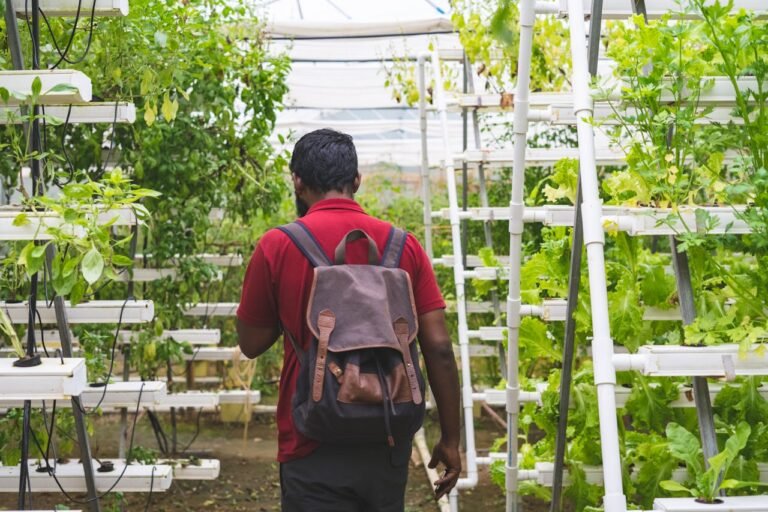Agritourism & Regenerative Wellness: Farm Stays & Retreats
Agritourism used to mean a pumpkin patch or a pick-your-own apple orchard. Today, it’s maturing into something deeper: visitors seeking not just fresh food but a real, restorative relationship with land that is being deliberately healed. People arrive wanting to slow down, learn, and leave with habits that support both their well-being and the farm’s long-term health. According to the U.S. Department of Agriculture’s Economic Research Service, U.S. farms and ranches earned $1.26 billion from agritourism services in 2022 — up 12.4% from 2017 after adjusting for inflation — and roughly 57% of U.S. counties reported some agritourism income.
That money figure is only part of the story. The “regenerative” label adds aims: restore soil, boost biodiversity, protect water, and support community food systems while also offering immersive guest experiences. Academic researchers who reviewed the literature find that regenerative agritourism pulls together principles from regenerative agriculture and tourism, focusing on ecological and social benefits as much as on visitor enjoyment. The scholarly review argues that while “regenerative” can sometimes be used as a buzzword, the approach emphasises education, community stewardship, and measurable improvements in land health.

True farms, true people, true effects
If you want proof that this is more than marketing, look at the people and places making the shift. In Vanuatu, a community-led program called Regenerative Vanua is helping Indigenous custodians link food, culture and visitors so tourism becomes an educational exchange, not just entertainment. Local leaders stress that guests enter the land on the host’s terms and that the goal is to leave places healthier for future generations. The Australian Centre for International Agricultural Research (ACIAR) reports that the project convened a global symposium and exchanges that connected Pacific islanders and Australian farmers, showing how traditional knowledge and modern regenerative techniques can be shared in practice. Those community exchanges are already shaping how local agritourism is run and evaluated.
Closer to the luxury end of travel, leading properties have also embraced regenerative practices because their guests want transformation as well as comfort. Industry voices and hoteliers say travellers increasingly look for meaning and grounding in nature, and that time on working land offers measurable wellness benefits, from lower stress markers after short nature exposure to greater satisfaction with food sourced directly from gardens. Writer and hospitality consultants quoted in travel coverage by Vogue.com highlight farms that combine workshops, mindful activities, and seasonal, farm-to-plate cuisine to create a mental and physical reset for guests.
Personal experiences reinforce these findings. Journalists and guests who’ve stayed on farmstays report that the sensory rhythm of the land — the smell of soil, early morning chores, food harvested that same day — can be genuinely restorative. A Washington Post feature on Australian farmstays described families and multi-generation operators who opened their gates after droughts and economic shocks; visitors who took part in farm life left with a clearer understanding and stronger appreciation for resilient food systems. Farmers reported that agritourism helped diversify income and rebuild local pride after hard seasons.
Research, numbers and what they mean (a short statistics table)
Putting the trend in data helps planners, farmers, and travellers make better decisions. Below is a short, focused snapshot of the most relevant figures and what they signal for regenerative agritourism.
| Measure | Value | Why it matters |
|---|---|---|
| Agritourism income (U.S., 2022) | $1.26 billion | Shows scale and market growth; many farms rely on diversification. According to USDA ERS, 2022. |
| Counties reporting agritourism income | 57% of U.S. counties | Demonstrates geographic spread and community impact. According to USDA ERS, 2022. |
| Regenerative agritourism literature review | 2024 (MDPI review) | Scholars note the concept borrows from traditional agritourism but urges clearer definitions and measurable regenerative outcomes. |
| Regional program example | Regenerative Vanua (Vanuatu), 2024–25 | Real program showing how Indigenous stewardship + verification can scale regenerative models. |
| Wellness travel interest | Growth in farm hospitality and experiential travel (industry reporting, 2024–25) | Indicates strong consumer demand for nature-based, regenerative stays. |
These numbers show a market that is both large enough to be financially meaningful and wide enough in reach to be a genuine tool for landscape and cultural stewardship, but the numbers don’t prove quality. That’s where standards, measurement and authentic host-led programming matter most. The academic review urges researchers and practitioners to move beyond the buzzword and to define clear regenerative outcomes that agritourism can credibly pursue.

How farmers, hosts and travellers make it real — practical, proven steps
Farmers and hosts who succeed with regenerative agritourism treat the experience as education, livelihood and landscape work simultaneously. First, ground your offering in what the land and community already know: welcome visitors into real farm tasks, not staged shows. According to the ACIAR report, in Vanuatu, for example, hosts craft experiences that share Indigenous food and farming knowledge on the locals’ terms, which strengthens both cultural continuity and visitor learning. That model reduces the risk of commodifying people or ecosystems while enhancing authenticity.
Second, measure ecological and social outcomes. The scholarly review argues that practitioners should track soil health, biodiversity proxies, community benefit, visitor learning outcomes and food security impacts — then share those metrics publicly. Simple baseline measures might include soil organic matter tests, records of native species sightings, and visitor surveys about changes in food habits after a stay. Those measures help turn “regenerative” from marketing into verifiable stewardship.
Third, design visitor programs for wellbeing and learning together. Properties that pair gentle, mindful activities (such as guided walks, morning chores, and farm meals) with educational experiences (cooking workshops, seed saving, and composting classes) tend to deliver stronger satisfaction and better behavioural change among guests. Industry reporting shows that travellers seek both immersion and service — a farm hotel can be both restful and instructive when the programming is intentional.
Fourth, plan finances and resilience. Agritourism income varies widely; many farms earn small amounts, while a smaller share earns significant revenue. The USDA data show many farms earn modest sums from agritourism, so treat offerings as part of a diversified income strategy, not an overnight fix. Good practice includes realistic pricing, clear safety and liability planning, insurance, and community partnerships to spread demand across seasons. This stabilises cash flow and reduces pressure on ecosystems during busy months.
Finally, build networks and standards. Regional alliances, farmer-to-farmer exchanges, and third-party recognition programs help maintain quality, protect hosts and measure impact. Regenerative Vanua’s verification pathway is a practical example: it tied community standards to visitor practices and helped form a collective that can guide marketing and training. For smaller farms, joining local agritourism trails or cooperative platforms can increase bookings while spreading best practices.

Practical checklist for hosts (quick mental map to act on)
Start with what you already do well. Identify one regenerative on-farm action to document, design two short visitor activities that teach that action, set sensible prices and safety plans, and partner with at least one local business to spread the impact.
Conclusion and three simple actions anyone can do right now
Agritourism that truly embraces regenerative wellness offers a pivot: it can help farms survive economically, restore land ecologically, and reconnect guests to food, culture and nature. For this promise to be real, projects must move beyond marketing and toward measurable stewardship, host leadership and visitor education. To get started today:
- If you’re a host, run one visitor day that includes a soil or seed activity and collect feedback.
- If you’re a traveller, pick a farmstay that publishes its land-care practices and ask what you can learn
- If you’re a planner or funder, support farmer exchanges and measurement frameworks that reward genuine regenerative outcomes.
Agritourism’s rise is not just about nicer beds or prettier Instagram photos. When done honestly, it is a practical route to heal soil, sustain families, and help more people learn where their food and wellbeing come from. The evidence from farm stays, research reviews and regional programs shows the idea works — but only when hosts, visitors and institutions work together to make regenerative action measurable and fair.







